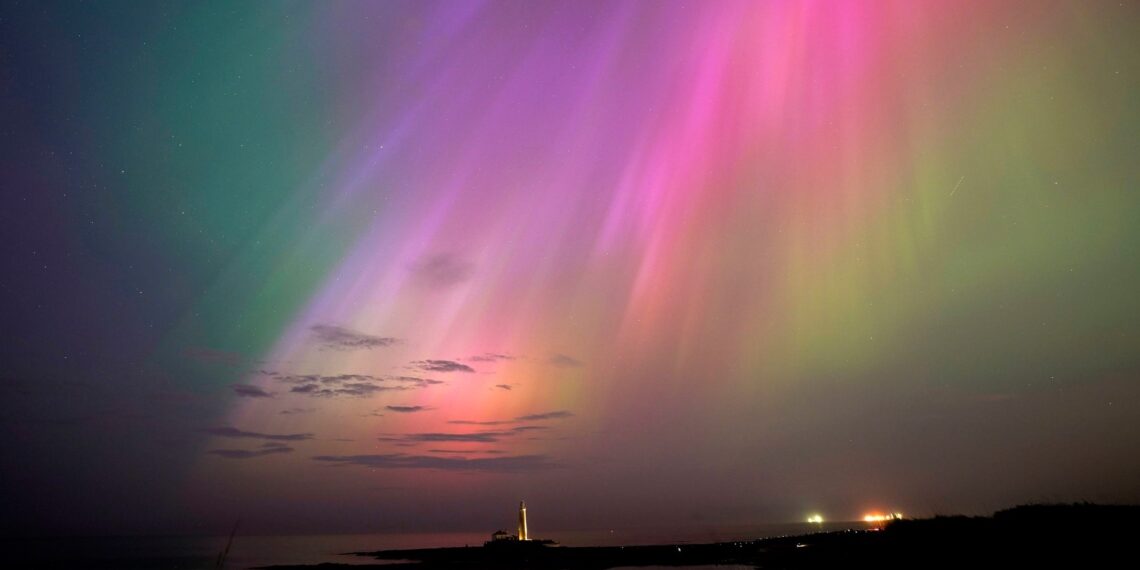A dazzling display of auroras illuminated the skies across numerous regions, marking the second consecutive occurrence on Saturday.
This stunning celestial phenomenon, typically confined to the far northern reaches of the planet and commonly known as “northern lights”, was triggered by a potent solar storm.
According to a report by an international news agency, this powerful solar storm is anticipated to persist into Sunday.
The National Aeronautics and Space Administration (NASA) took to social media on Sunday to elucidate the phenomenon in a detailed thread.
Explaining the two primary solar eruptions, namely solar flares and coronal mass ejections (CMEs), NASA clarified, “Solar flares are intense flashes of light — a result of the Sun’s complex magnetic fields abruptly rearranging themselves.”
Regarding CMEs, NASA elaborated, “Coronal mass ejections (CMEs) are giant clouds of solar particles laced with magnetic fields that escape from the Sun. These giant clouds can travel anywhere in the solar system, including to us here on Earth.”
Highlighting the timeline for reaching Earth, NASA stated, “Solar flares reach us quickly — light only takes about 8 minutes to reach Earth. Because CMEs are made up of particles, they may take days to reach us. But when they do, they can set the aurora alight.”
Moreover, when these CMEs interact with Earth’s magnetic field, they discharge solar particles into the near-earth space.
These particles then follow Earth’s magnetic field lines, culminating in a luminous display known as the auroral oval around the poles.
“The incoming particles strike gases in our atmosphere, causing them to heat up and glow: the aurora. The colours depend on the type of gas and its altitude. Oxygen glows red or blue; nitrogen can be green, blue, or pink,” NASA elaborated.
Sharing a captivating snapshot of the previous night’s northern lights, which were sighted in the Bahamas, NASA remarked, “Powerful, repeated eruptions like those we’ve had recently can widen the auroral oval, pushing aurora to lower latitudes. Last night, northern lights were reported as far south as the Bahamas!”















